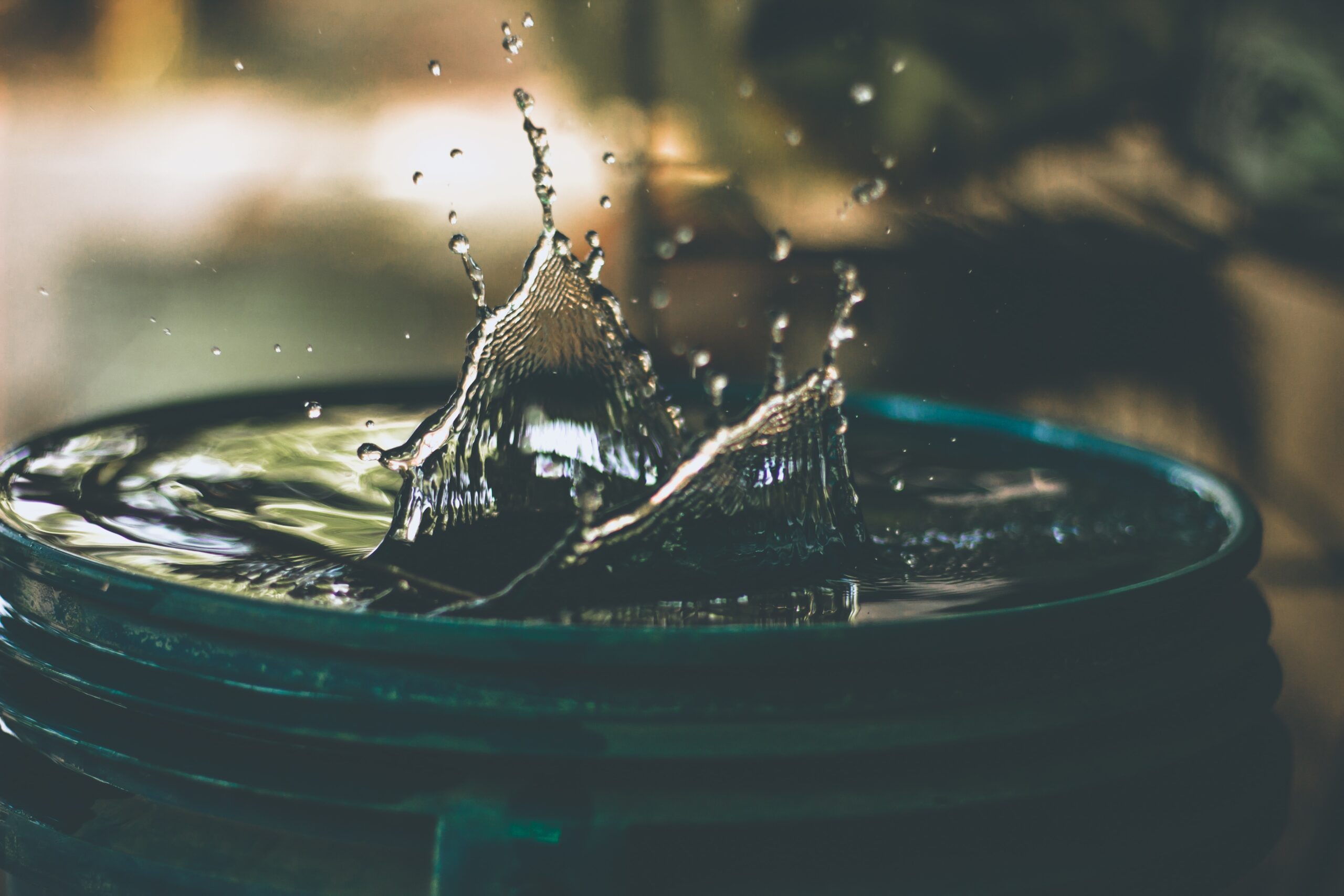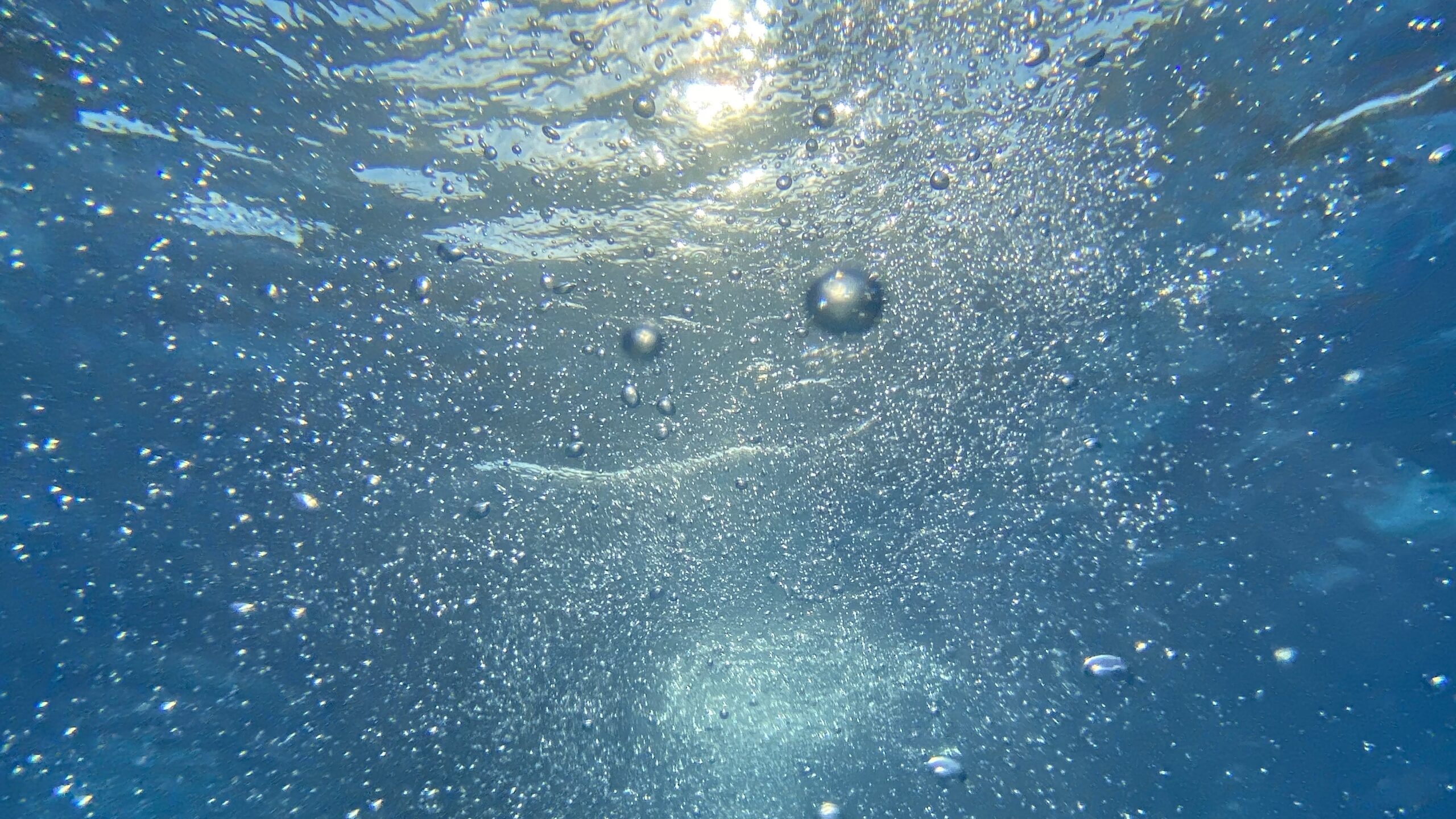Maintaining well water with high levels of chlorate can be a challenging task, but fear not, for we have some helpful tips to guide you through it. The presence of elevated chlorate levels in well water may pose potential health risks, so it is crucial to take proactive measures to ensure its quality. In this article, we will explore various methods and techniques that you can employ to effectively manage and maintain your well water, guaranteeing the safety and well-being of you and your loved ones. So, let’s dive in and discover the solutions to this common issue together!
Understanding the Impact of High Chlorate Levels in Well Water
What is chlorate?
Chlorate is a chemical compound that can be found in well water. It is formed when chlorine dioxide, a common disinfectant used in water treatment, reacts with other substances present in the water. Chlorate is a strong oxidizing agent and can persist in the environment for a long time.
Sources of chlorate in well water
There are various sources of chlorate in well water. One of the primary sources is the use of chlorine dioxide as a disinfectant in water treatment plants. Industrial activities, agricultural practices, and the use of certain chemicals can also contribute to high chlorate levels in groundwater. Runoff from fertilizers and herbicides containing chlorine compounds can contaminate nearby water sources, including wells.
The health risks associated with high chlorate levels
Exposure to high levels of chlorate in well water can pose health risks. Chlorate can interfere with the uptake of iodine in the thyroid gland, which plays a crucial role in the production of hormones that regulate metabolism. Prolonged exposure to chlorate can disrupt thyroid function and lead to thyroid-related health problems. Additionally, studies have shown that chlorate exposure may have adverse effects on reproductive health and neurodevelopment in infants.
Testing and Monitoring Chlorate Levels
Importance of regular testing
Regular testing of well water for chlorate levels is essential to ensure the safety of your drinking water. Testing helps to identify if and when chlorate levels exceed recommended guidelines or regulations. By establishing a baseline for chlorate levels in your well water, you can create a monitoring plan to track any changes over time.
Testing methods for chlorate detection
There are various testing methods available for detecting chlorate in well water. These methods may include colorimetric tests, ion chromatography, and mass spectrometry. It is crucial to choose a testing method that is accurate, reliable, and suitable for your specific needs. Consulting with a certified water testing laboratory can provide you with guidance on the most appropriate testing method for your situation.
Interpreting test results
Interpreting test results for chlorate levels in well water requires an understanding of the recommended guidelines or regulations. Different countries and regions may have different standards for acceptable chlorate levels in drinking water. It is important to compare your test results against these guidelines to determine whether action is needed to address high chlorate levels.
Establishing a monitoring schedule
Once you have established the baseline for chlorate levels in your well water, it is advisable to establish a monitoring schedule. Regular monitoring allows you to track any changes in chlorate levels and take appropriate measures if levels exceed recommended limits. Your monitoring schedule may vary depending on factors such as the frequency of contaminant sources in your area and any regulatory requirements specific to your locality.

Removing Chlorate from Well Water
Treatment options for chlorate removal
If you discover high levels of chlorate in your well water, there are several treatment options available to remove or reduce the contaminant. The appropriate treatment method will depend on factors such as the concentration of chlorate, water flow rate, and the specific characteristics of your well water.
Activated carbon filtration
Activated carbon filtration is a commonly used method for removing chlorate from water. Activated carbon has a high affinity for chlorate ions and can effectively adsorb them from the water. This treatment method can be installed at the point of entry or point of use to remove chlorate as water flows through the carbon filter.
Ion exchange
Ion exchange is another treatment method that can be used to remove chlorate from well water. Strong base anion exchange resins can selectively remove chlorate ions by exchanging them with chloride ions. This process can effectively reduce chlorate levels in water, but regular regeneration or replacement of the ion exchange resin may be required.
Reverse osmosis
Reverse osmosis is a highly efficient treatment method for removing chlorate from water. It involves forcing water through a semipermeable membrane that can effectively reject chlorate ions. Reverse osmosis systems can be installed at the point of use, such as under the sink, to ensure that the water you consume is free from chlorate.
Electrochemical reduction
Electrochemical reduction is a specialized treatment method that utilizes an electrical current to convert chlorate ions to harmless chloride ions. This process occurs in an electrolytic cell, where the chlorate ions undergo electrochemical reactions and are reduced to chloride ions. Electrochemical reduction systems may require professional installation and maintenance.
Selecting the appropriate treatment method
Selecting the most suitable treatment method for chlorate removal depends on various factors. These include the concentration of chlorate, water quality, flow rate, installation requirements, and maintenance considerations. It is advisable to consult with water treatment specialists or experts to determine the best treatment option for your specific situation.
Maintaining Water Quality After Chlorate Removal
Post-treatment monitoring
After implementing a chlorate removal treatment method, it is important to continue monitoring the water quality to ensure that chlorate levels remain below recommended guidelines or regulations. Regular testing can provide assurance that the treatment system is effectively removing chlorate and maintaining the desired water quality.
Maintenance of treatment equipment
Regular maintenance of treatment equipment is crucial to ensure its optimal performance and longevity. This includes following the manufacturer’s guidelines for routine maintenance tasks such as cleaning, sanitizing, and replacing components. Proper maintenance can help prevent issues such as clogging, reduced efficiency, or bacterial growth that could compromise the quality of the treated water.
Replacing filters and membranes
In treatment methods such as activated carbon filtration and reverse osmosis, filters and membranes should be replaced periodically to maintain their effectiveness in removing chlorate. The frequency of filter replacement may vary depending on factors such as water quality, usage, and manufacturer recommendations. Timely replacement of filters and membranes is essential to prevent potential breakthrough of chlorate and maintain optimal water quality.
Inspecting plumbing and distribution systems
Regular inspections of plumbing and distribution systems can help identify potential sources of recontamination or issues that may compromise water quality. Monitoring for leaks, corrosion, or any changes in water taste, odor, or color can prompt timely repairs or adjustments to prevent further contamination or deterioration of water quality.
Preventing recontamination
Preventing recontamination of well water with chlorate is crucial to ensure ongoing water quality. Factors such as proper storage and handling of chemicals, regular well disinfection, and groundwater protection measures can minimize the risk of chlorate entering the well water again. Implementing best practices, maintaining good hygiene, and following recommended guidelines contribute to sustaining safe and clean well water.

Preventive Measures to Minimize Chlorate Levels
Understanding the sources of chlorate
To minimize chlorate levels in well water, it is important to understand the sources of chlorate in the surrounding environment. Identifying potential sources such as nearby industrial activities, agricultural practices, or the use of certain chemicals can help implement appropriate preventive measures.
Reducing chlorate in the environment
Reducing chlorate in the environment involves implementing measures to minimize its use and release. This may include the adoption of safer alternatives to chlorinated chemicals or the implementation of practices that reduce the generation and release of chlorate into the air, soil, or water.
Land use practices and agricultural runoff
Controlling agricultural runoff is crucial in minimizing chlorate in well water. Implementing best management practices in farming, such as proper application of fertilizers and control of herbicide usage, can help prevent chlorate from reaching groundwater sources.
Proper storage and handling of chemicals
Proper storage and handling of chemicals can help prevent accidental spills or leaks that may lead to chlorate contamination. Following safety guidelines, using appropriate storage containers, and establishing containment measures can minimize the risk of chemical releases and subsequent contamination.
Educating well owners and communities
Education and awareness play a vital role in preventing chlorate contamination in well water. Well owners and communities should be informed about the sources, risks, and preventive measures related to chlorate. Outreach programs, workshops, and informational materials can help disseminate knowledge and promote safe practices regarding well water management.
Alternative Water Sources for Contaminated Wells
Exploring alternative water sources
In cases where well water is contaminated with high levels of chlorate, exploring alternative water sources may be necessary to meet the household’s water needs. Exploring these alternatives ensures a reliable and safe supply of water for drinking, cooking, and other domestic uses.
Public water supply
Connecting to a public water supply is a viable option for households with contaminated well water. Public water supplies usually undergo extensive treatment processes, including chlorate removal, to ensure the delivery of safe drinking water. Contacting local water authorities or utilities can provide information on the availability and feasibility of connecting to a public water supply.
Rainwater harvesting
Rainwater harvesting can be an effective alternative water source for non-potable uses. Installing a rainwater collection system with appropriate filtration and disinfection methods can provide water for activities such as gardening, toilet flushing, and outdoor cleaning. However, rainwater should not be used for drinking or cooking without proper treatment.
Water trucking
Water trucking involves delivering water to affected households using specialized tanks or trucks. This option is often used in emergency situations or temporary disruptions in water supply. However, it may not be a long-term solution due to logistical challenges, cost, and potential quality concerns.
Bottled water
For short-term or immediate needs, bottled water can serve as a convenient alternative to contaminated well water. Ensuring that the bottled water meets regulatory standards and is from a trusted source is important to ensure its safety and quality. Bottled water should be stored properly to prevent any potential contamination.

Seeking Professional Assistance
Importance of consulting experts
When dealing with high levels of chlorate in well water, it is essential to consult with experts who specialize in water testing and treatment. Certified professionals can provide guidance on testing methods, treatment options, and maintenance requirements to ensure the safety and quality of your well water.
Certified water testing laboratories
Working with certified water testing laboratories is crucial to obtain accurate and reliable results. These laboratories have the expertise and equipment necessary to analyze water samples for chlorate levels and other contaminants. They can help interpret the test results and provide recommendations for appropriate actions based on the findings.
Water treatment specialists
Water treatment specialists can assess your specific situation, including the concentration of chlorate in your well water and other water quality parameters. They can recommend treatment options that are tailored to your needs and provide professional installation, maintenance, and monitoring services.
Health authorities and environmental agencies
Local health authorities and environmental agencies are valuable resources for information regarding chlorate regulations and compliance requirements. They can provide guidance on recommended chlorate levels in drinking water, reporting requirements, and other relevant information to ensure the safety and compliance of your well water.
Implementing Best Practices for Well Management
Well construction and maintenance
Proper well construction and maintenance play a significant role in preventing and minimizing chlorate contamination. Following construction standards, regularly inspecting the well for any potential issues, and addressing maintenance needs promptly are critical to ensuring the integrity of the well and preventing contamination.
Regular well inspections
Regular inspections allow for early detection of any changes or issues that may impact water quality. Inspecting the well components, including the casing, seals, and wellhead, can help identify signs of degradation, leaks, or potential sources of contamination. Routine inspections should be conducted by qualified professionals or according to local regulations or guidelines.
Groundwater protection measures
Implementing groundwater protection measures can help reduce the risk of chlorate contamination. These measures can include avoiding the use of chlorinated chemicals near wells, maintaining proper setbacks from potential contamination sources, and implementing best management practices for activities that can impact groundwater quality.
Proper well disinfection
Regular well disinfection can help control and minimize potential bacterial contamination, which can contribute to chlorate formation. Following recommended disinfection practices, such as using appropriate disinfectants and concentrations, and ensuring proper well flushing and disinfectant removal, can help maintain water quality and minimize the risk of chlorate formation.
Well sealing and decommissioning
Proper well sealing and decommissioning are necessary when a well is no longer in use. Abandoned or improperly sealed wells can pose a risk for contamination, including chlorate. Following local regulations and guidelines for well sealing and decommissioning ensures the protection of groundwater quality and prevents potential sources of contamination.

Understanding Regulatory Guidelines for Chlorate
National and international standards
National and international organizations set guidelines and standards for drinking water quality, including chlorate levels. These standards are based on scientific research and aim to protect public health. Familiarizing yourself with the regulatory guidelines relevant to your locality helps ensure your well water complies with these standards.
Local and state regulations
In addition to national and international standards, certain regions or states may have their own regulations governing chlorate levels in drinking water. These regulations may set more stringent requirements or additional monitoring protocols. It is important to be aware of and comply with any local or state regulations that apply to your well water.
Compliance requirements
Compliance with regulatory requirements involves regular testing, monitoring, and reporting of chlorate levels in well water. These requirements may dictate the frequency of testing, the thresholds for chlorate concentration, and the reporting procedures. Understanding and meeting these compliance requirements ensure the safety and quality of your well water.
Reporting and record-keeping
Recording and reporting chlorate test results are typically part of compliance requirements. Keeping a record of test results, maintenance activities, and any actions taken to address high chlorate levels is important for future reference and understanding the history of your well’s water quality. Consult your local health authorities or environmental agencies for specific reporting and record-keeping procedures.
Educating and Raising Awareness
Community outreach programs
Community outreach programs play a vital role in educating the public about chlorate and its impact on well water quality. These programs may include workshops, seminars, or public forums where experts can share knowledge, answer questions, and raise awareness about the importance of testing, treatment, and preventive measures.
Sharing information with neighboring well owners
Sharing information and experiences with neighboring well owners fosters a sense of community and encourages collaborative efforts in water management. Establishing communication channels, such as neighborhood associations or online forums, can facilitate the exchange of knowledge, resources, and support to ensure collective well water safety.
Promoting safe well water practices
Promoting safe well water practices is essential to prevent chlorate contamination and maintain water quality. This includes proper well construction and maintenance, regular testing and monitoring, following recommended treatment strategies, and implementing preventive measures. Sharing these practices through educational materials, social media, or community initiatives helps empower well owners to take proactive steps in managing their well water.
Engaging with local authorities
Engaging with local health authorities, environmental agencies, and elected representatives is crucial to advocate for safe well water practices and policies. By actively participating in community initiatives, workshops, or public hearings, you can play a role in influencing decision-making processes, sharing concerns, and promoting informed actions related to chlorate and well water management.
By understanding the impact of high chlorate levels in well water, testing and monitoring chlorate levels, implementing appropriate treatment methods, maintaining water quality, taking preventive measures, considering alternative water sources if necessary, seeking professional assistance, implementing best practices for well management, understanding regulatory guidelines, and raising awareness, you can effectively maintain well water with high levels of chlorate. Remember, your well water’s safety and quality are in your hands, and by being proactive, you can ensure the well-being of yourself and your community.


